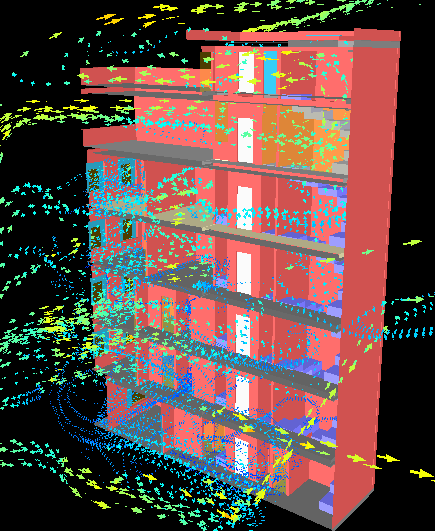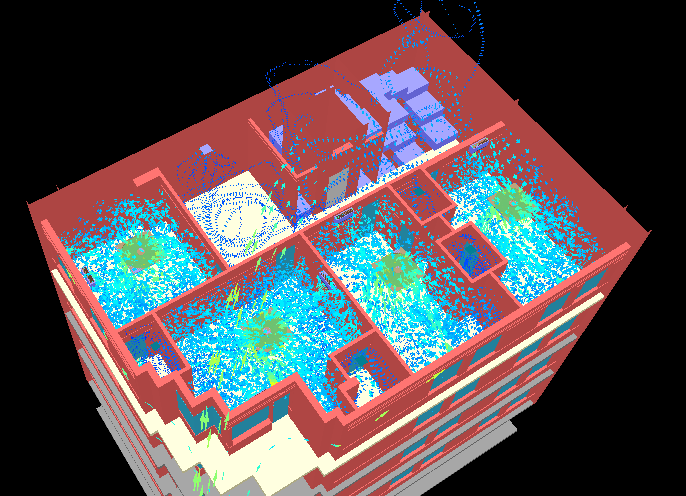- Predicting System Performance Before Construction:
- Simulation allows the evaluation of airflow, temperature distribution, humidity, and pollutant concentration in the space.
- This allows designers to adjust the design to optimize ventilation efficiency, ensuring a sufficient supply of fresh air to all areas.
- Cost Saving:
- Simulation helps detect and correct design errors before construction, avoiding material and time waste.
- Improving Ventilation System Efficiency:
- Simulation helps optimize the design of the ventilation system, ensuring:
- Providing the necessary amount of air for each area.
- Even distribution of air, avoiding excess or lack of air in some areas.
- Minimizing system noise and vibration.
- Saving operating energy.
- Ensuring Safety and Health:
- An efficient ventilation system will help:
- Improve indoor air quality, reducing the risk of respiratory diseases.
- Minimize the risk of fire caused by electrical short circuits from the ventilation system.
- Create a comfortable and safe living environment for users.
In addition, applying simulation to ventilation system design also brings other benefits such as:
- Helping designers easily compare different design options.
- Helping investors evaluate the investment efficiency of the project.
- Improving the aesthetics of the ventilation system.
With the above benefits, the application of simulation in ventilation system design is becoming increasingly popular. This is an effective solution to improve efficiency, optimize costs, and ensure the safety of the ventilation system.



